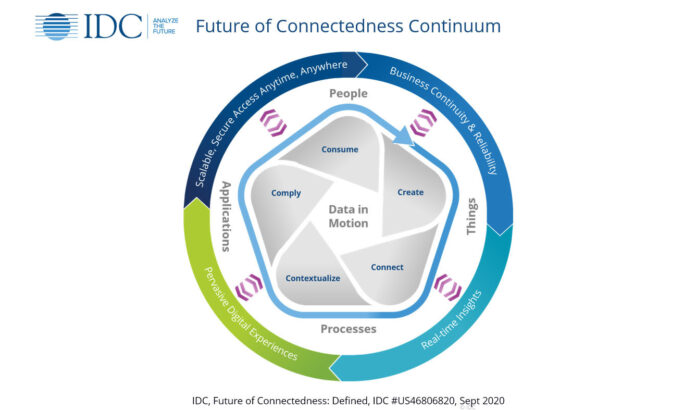As COVID-19 has highlighted the fundamental importance of connectivity, International Data Corporation (IDC) analysts have attempted to outline what the ‘future of connectedness’ looks like.
They define it as: “The timely movement of data across people, things, applications and processes to create seamless digital experiences.”
IDC’s new Future of Connectedness Continuum framework (see image above) is comprised of three separate but interdependent layers that must interact seamlessly and continuously:
- The Cycle of Data – these are the actions taken when data is in motion but requires agile, autonomous, pervasive, secure and resilient connectivity.
- Data Consumers – these are the consumers of the data in motion.
- Connectivity-Driven Outcomes – these are the outcomes achieved when data is moved seamlessly and provide value to organisations and individuals alike.
Strategic imperative
The Future of Connectedness means that organisations need to look to connectivity as a strategic element to maintaining, sustaining and growing business operations, IDC said, noting that this will require additional investment, more strategic planning, and greater oversight.
“Connectivity is the common denominator in how we interact with the world around us today. As digital interactions increase, it becomes clear that connectivity is not yet seamless, nor pervasive,” said Carrie MacGillivray, group vice president and general manager, Worldwide Telecom, Mobility and IoT research. “The evolution of access technologies is going to accelerate the digital connection and in turn, unveil the Future of Connectedness – between people, things, processes, and applications. These connections are the sinews of how we live, work and play.”.
Connectivity is now recognised by CEOs as one of the top three strategic elements in their digital transformation strategy, according to IDC.



